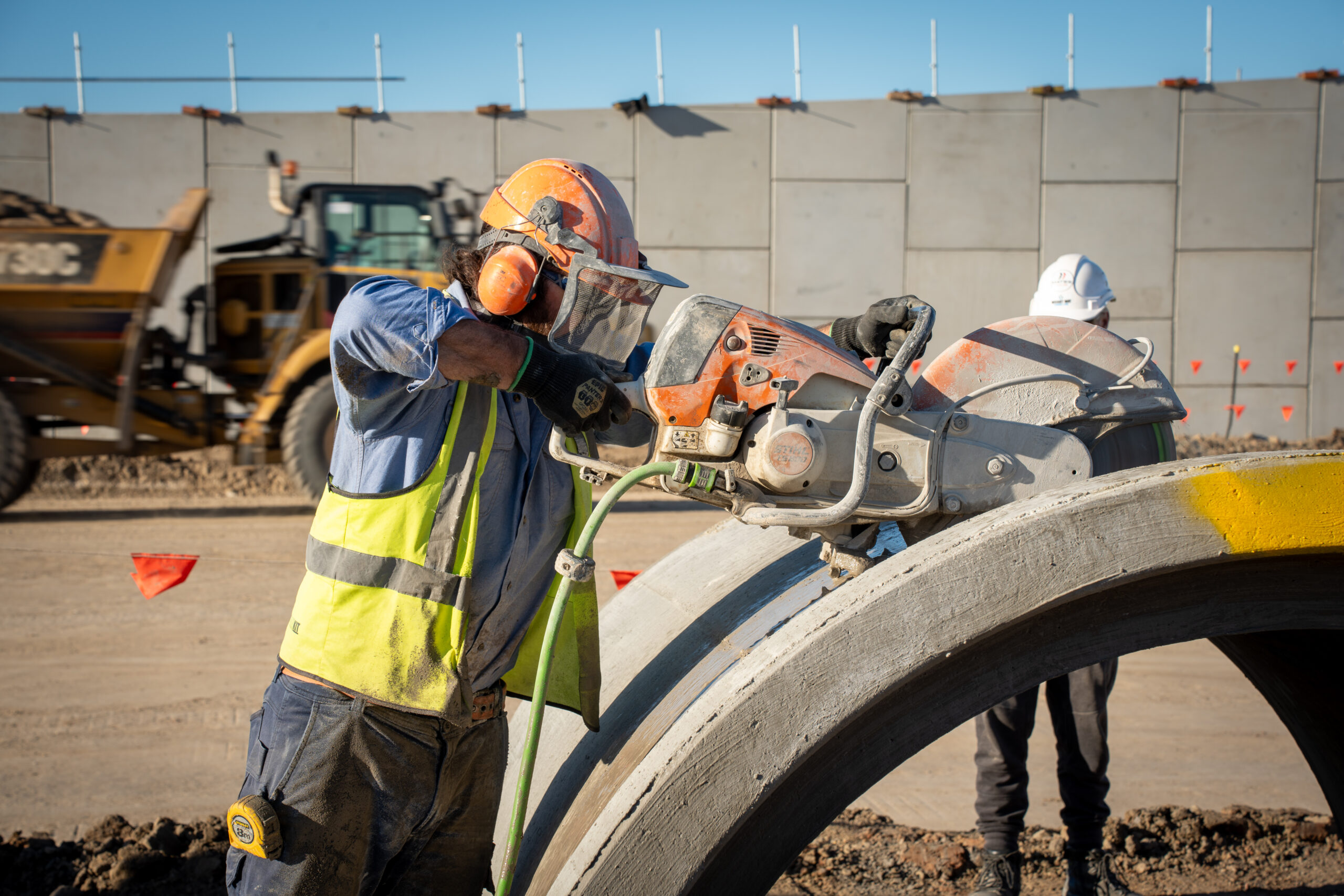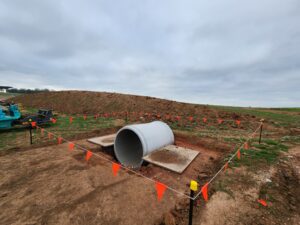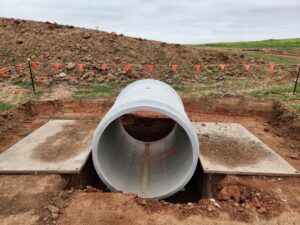Cutting concrete stormwater pipes is a critical task in construction and infrastructure projects, requiring precision and adherence to safety protocols. Here’s a step-by-step guide on how to perform this task effectively and safely.
Preparation and Safety
Personal Protective Equipment (PPE):
- Dust Masks: To protect respiratory systems from inhaling concrete dust.
- Aprons: To safeguard against flying debris and water splashes.
- Safety Glasses: To protect eyes from dust and debris.
- Ear Protection: To mitigate the high noise levels from cutting equipment.
- Gloves: To protect hands from sharp edges and vibration.
Tools and Equipment
Quick Cut Saws with a Clutch:
- These saws are essential for cutting through the tough concrete material.
- Ensure the saw has a clutch to reduce the risk of kickback and improve control.
Pipe Cutting Cradle:
- A cradle holds the pipe securely in place, preventing movement during cutting.
- It ensures a straight and accurate cut.
Adequate Water Supply:
- Using water while cutting is crucial to suppress dust and cool the blade.
- It also prevents overheating and prolongs the life of the saw blade.
Cutting Process
- Set Up the Work Area:
-
- Place the pipe on a stable surface and secure it using the pipe cutting cradle.
- Ensure the work area is clear of obstructions and non-essential personnel.
- Mark the Cut Line:
-
- Use a chalk line or marker to draw the cut line on the pipe, ensuring accuracy and precision.
- Prepare the Quick Cut Saw:
-
- Check the blade for wear and replace it if necessary.
- Attach the water supply to the saw, ensuring a steady flow to the blade.
- Cutting the Pipe:
-
- Position the saw blade on the marked line and start the saw.
- Slowly lower the blade into the pipe, applying steady pressure.
- Move the saw along the cut line, keeping the blade wet to minimize dust and heat.
- Finishing the Cut:
-
- Once the cut is complete, turn off the saw and allow the blade to come to a stop.
- Remove any remaining dust or debris from the cut surface.
- Cover any exposed steel with approved material
Large Diameter Pipes
For pipes larger than 1350mm in diameter, additional steps are required:
- Excavate the Pipe Cradle: Excavate the pipe cradle into the ground to provide stability and access. This allows for better reach and control over the cutting process.
- Safety Measures: Ensure the excavation is stable and secure to prevent any collapse or movement during cutting.
Post-Cutting Safety
- Inspect the Cut: Check the cut for any imperfections or irregularities.
- Clean Up: Properly dispose of any debris and clean the work area.
- Equipment Maintenance: Clean the saw and blade, and check for any damage or wear.
Conclusion
Cutting concrete stormwater pipes requires a combination of the right tools, proper PPE, and careful technique. By following these steps, you can ensure a safe, efficient, and accurate cutting process, essential for the successful installation and maintenance of stormwater management systems. Always prioritize safety and proper equipment handling to prevent accidents and ensure high-quality work.



